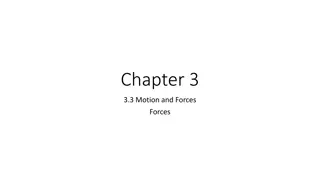Interactive Science Review Game for Students
Engage students in a fun and educational review game where participants must buzz in to answer science questions. Each correct response earns a point while incorrect answers pass the question to others. Encourage focus and quick thinking with rules that limit responses and penalize distractions. Explore topics like forces, matter, gravity, and unit measurement in an interactive quiz setting.
Download Presentation

Please find below an Image/Link to download the presentation.
The content on the website is provided AS IS for your information and personal use only. It may not be sold, licensed, or shared on other websites without obtaining consent from the author. Download presentation by click this link. If you encounter any issues during the download, it is possible that the publisher has removed the file from their server.
E N D
Presentation Transcript
Rules Participants buzz in after reading the question silently to themselves Each correct response results in 1 point
Rules Cont. Incorrect answer: Same question goes to any other person remaining that did not buzz in before - awarded 1 point Next question will go to another set of lab table representatives Outside talking amongst lab tables during a round results in deduction of point
Rules Cont. First response - only response (cannot change answer)
Question #1 A direct force that requires contact is called what?
Question #2 The amount of matter in an object refers to its what?
Question #3 Finish the following statement: All forces act in __________.
Question #4 When something acts against another force, the force is ____________________ it.
Question #5 The force of an object due to gravity is referred to as its what?
Question #6 A force becomes stronger when it is _______________.
Question #7 A force that attracts any objects with mass down to Earth is called what?
Question #8 When counteracting forces are equal, there is no change in motion. Another way of saying this is that the forces ___________ ___________.
Question #9 What is the unit that force is measured in? (hint the unit was recorded for each reading on the force probe lab activity)
Question #10 Applied force to change speed, acceleration, and friction can change the _____________ of an object.
Question #11 For something to be motionless, how are the forces acting on an object? Extra point what forces are acting upon it?
Question #12 For an object beginning to move, how are the forces acting upon the object?
Question #13 For something moving at a constant speed, how are the forces acting upon the object
Question #14 What is static friction?
Question #15 Which force is greater when an object speeds up?
Question #16 Which force is greater when an object begins to slow down?
Question #17 Newton s first law states that an object ________ will stay __________ and an object _____________ will stay ______________.
Question #18 What will strike the floor with more force, a bowling ball or a pool ball and why? Extra point which of Newton s Laws does this refer to?
Question #19 What is an example that can demonstrate Newton s 3rd Law of Motion?
Question #20 What force must be overcome in order to move an object that was previously motionless?
Question #21 Draw a free body diagram of an air powered car moving along the floor
Question #22 Draw a diagram of the Earth orbiting around the sun? Extra point indicate on the diagram at which the point the Earth will be moving the fastest and the point the Earth will be moving the slowest
Question #23 Draw a free body diagram of a baseball that is dropped by a hand that falls to the ground
Question #25 Draw a free body diagram of when this baseball that was dropped strikes the ground
Question #26 Draw a free body diagram of a textbook being pushed across a table Indicate on your diagram, if the force of friction acting against the book is 2 Newtons, what amount of force will be needed to get the book moving
Question #27 Draw a free body diagram of the floating magnets activity
Question #28 Make an interactions chart of 2 cars in the mud tied together by a rope
Bonus Question When a roller coaster moves up an incline, what type of energy is collecting to move it forward at a high speed after the initial drop?























